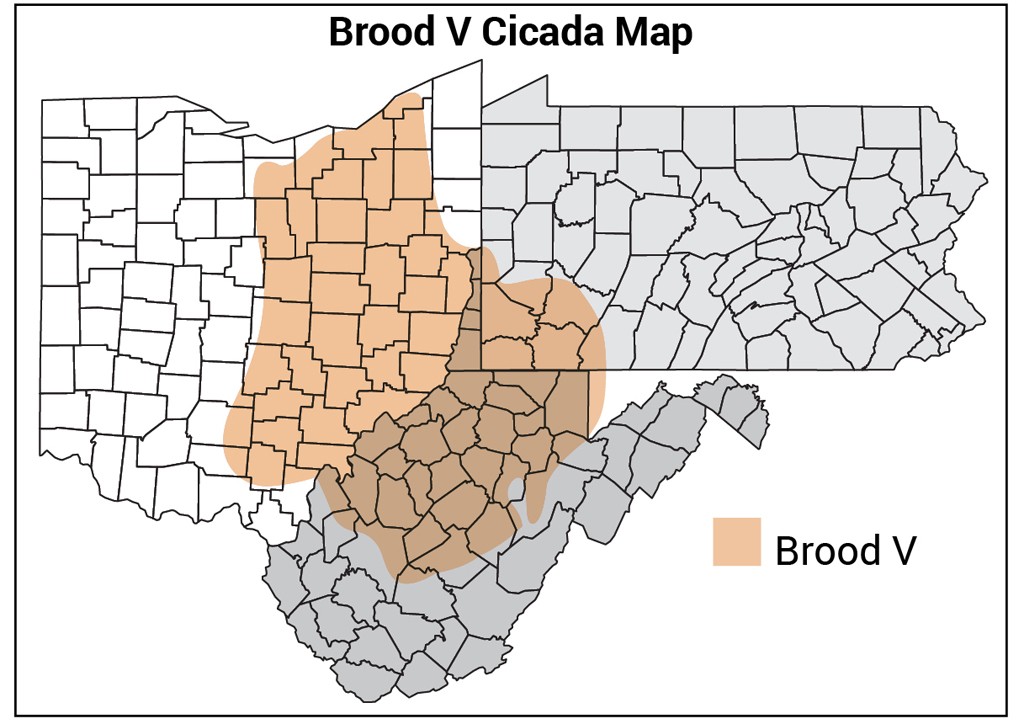SALEM, Ohio — Brood V, a group of periodic cicadas, will soon begin to emerge from the ground, much to the displeasure of many this summer.
No threat
While they are a large, unattractive insect, West Virginia University Extension Service entomology expert Daniel Frank advised that they’re nothing to be afraid of.
Related:
“Cicadas are not normally considered significant pests,” explained Frank. “They’re plant feeders, pose no health threat to people or pets and will not bite or sting.
Periodic cicadas are found only in eastern North America, and have 13- or 17-year life cycles. Brood V has a 17-year life cycle, which means that the adults emerging from the ground this summer have been feeding on tree roots roughly since 1999.
In Ohio, there are four broods that regularly appear. Because of the long time taken by these insects to complete their life cycles, many things can happen that modify local populations. Wood lots are often destroyed and new developments where trees that are 14 to 15 years old have been established after the last brood’s emergence.
If new developments are adjacent to wooded areas that have supported a brood, the adults will commonly fly to the younger trees to lay their eggs. This helps expand their territory and maintain their populations for the next 17 years. In May, when soil temperatures begin to exceed 64 degrees, the nymphs will emerge from the ground to climb onto a tree or similar surface, shed their exoskeleton and become winged adults. From that point, the cicadas will only live a few weeks to reproduce, then will die.
Tree damage
As plant feeders, cicadas use their piercing and sucking mouthparts to leach nutrients from tree roots. According to Frank, while that act itself is usually not damaging to trees, the small incisions that adult female cicadas make on small branches and twigs to lay eggs can be.
“During a mass emergence like we’ll see this summer, those small injuries add up and can be quite extensive and noticeable,” he explained. “The twigs will die because the branch is split when the eggs are laid inside. This damage is not very serious for mature trees, but can interfere with growth and development of young or newly planted trees.”
He added that homeowners may want to wait to plant new trees, or cover young trees with a fine mesh netting as the adults begin to emerge and lay eggs. In addition, pruning out and destroying damaged twigs a few weeks after adults lay eggs can help prevent new nymphs from entering the soil.
Benefits
“The silver lining in all of this is that periodic cicadas are very beneficial for the environment,” said Frank. “They aerate the soil, their bodies contribute nitrogen and other nutrients to the soil when they die and they serve as a food source for birds, mammals and fish.”
For more information regarding cicadas, or any other pest, contact the WVU Hancock County Extension office at 304-564-3805, or visit anr.ext.wvu.edu/pests.











